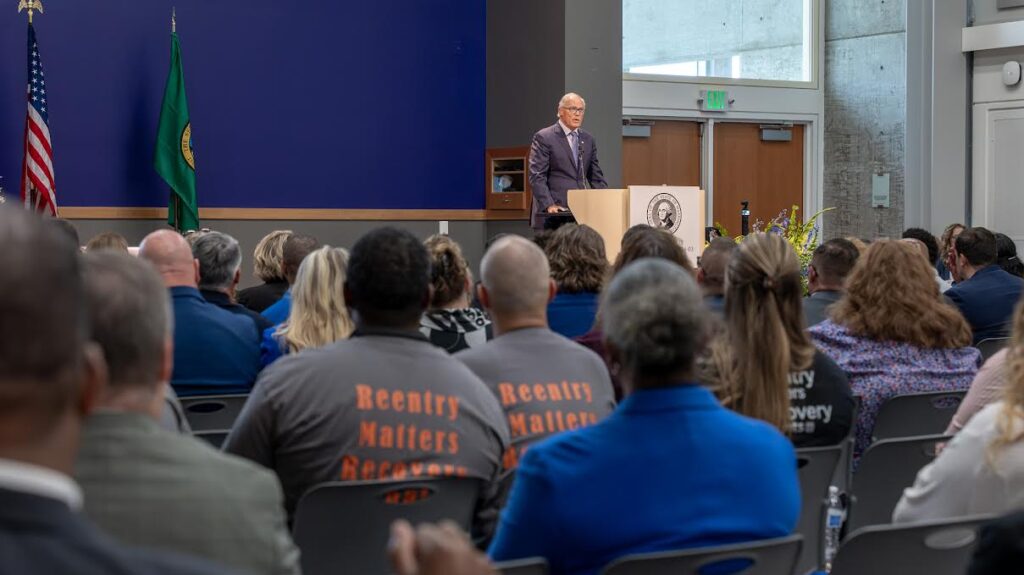Washington Gov. Jay Inslee signed an executive order in Tacoma on Monday to improve the state’s effort to help individuals make a successful reentry into their community when they leave prison. (Courtesy of governor’s office)
Gov. Jay Inslee issued an executive order Monday to deepen and expand Washington’s efforts to prepare individuals for successful reentry in communities upon leaving prison.
His order calls for developing “a comprehensive entry and exit process” tailored to each person’s needs in areas such as housing, employment, health care, substance use treatment, and mental health services.
It also seeks to ensure each person has a Washington identification card or driver’s license and information on how to access social services.
And it enlists Washington in a nationwide initiative known as Reentry 2030 that aims to reduce recidivism by boosting the successful reentry of those leaving state-run correctional facilities.
“This executive order is basically a public safety executive order,” Inslee told a large crowd gathered in William Philip Hall at the University of Washington Tacoma. It does so by committing the state to provide services needed to keep individuals from returning to prison, he said.
“This is a major effort to reduce crime,” Inslee added. “What we’re doing basically is telling everyone who leaves our custody and our Department of Corrections a statement: We have provided you the services you need to succeed outside of our walls. So good luck, now don’t come back.”
Washington is the sixth state to sign onto the nationwide initiative known as Reentry 2030. Missouri was the first, in July 2023, followed by Alabama, North Carolina, Nebraska and New York. Inslee is the second governor to embed the initiative goals into an executive order.
Reentry 2030 is a partnership between the Correctional Leaders Association, The Council of State Governments Justice Center, JustLeadershipUSA and the Bureau of Justice Assistance, a component of the U.S. Department of Justice.
Inslee signed an executive order in 2016 to ensure education, job training and other services are available to individuals as they prepare for the transition out of prison. What’s in place, Inslee said, has reduced the rate of recidivism in the first three years of release by 30 percent.
The new directive seeks to strengthen collaboration among executive branch agencies in the effort.
For example, it tasks the state Department of Corrections and state Department of Children, Youth & Families to “design and implement” the entry and exit process, and to provide each person leaving a correctional facility with contact information for local social service programs and other community resources.
The state Department of Licensing must work with corrections to make sure that, upon release, all consenting individuals have a valid driver’s license or state identification card. This may require DOL to make changes to provide incarcerated persons with access to driver education and a driving test.
Another provision says the Employment Security Department must collaborate with the corrections agency on employment and training services prior to and following one’s release, including connecting them with WorkSource services.
And, to allow qualified applicants to seek jobs with state agencies, the Department of Enterprise Services and the Office of Financial Management must update training for supervisors on how much of an applicant’s criminal history is appropriate to consider.
Agencies covered in the order must provide progress reports annually starting Sept. 1, 2025.
While Inslee’s order covers only executive branch agencies, it encourages other statewide elected officials as well as the state Legislature, community colleges and universities, and state boards and commissions to follow its provisions.
On Monday, Adolphus Redding and Buffy Henson, spoke of how education and job training they obtained while incarcerated paid dividends when they got out. Redding is now an aerospace machinist apprentice and Henson is an account executive in the Correctional Industries division of the Department of Corrections.
“If you see it, you can achieve it,” Redding said.

